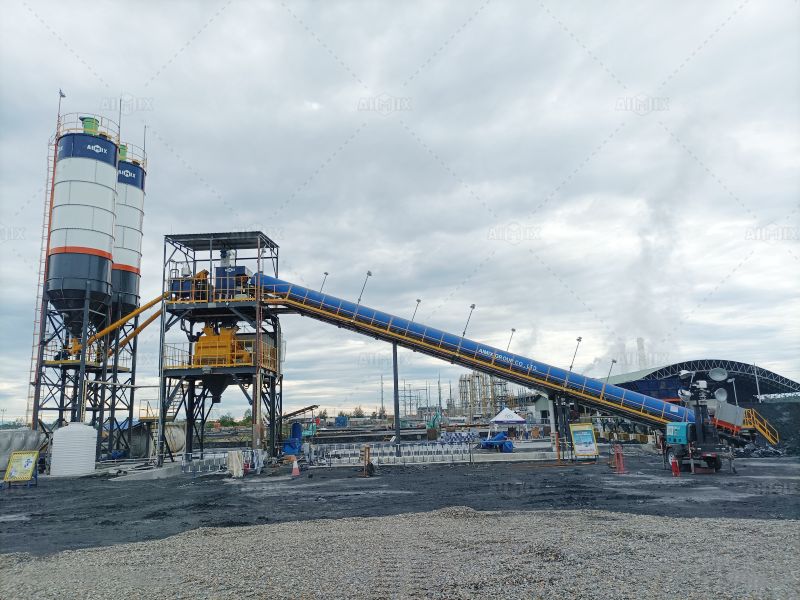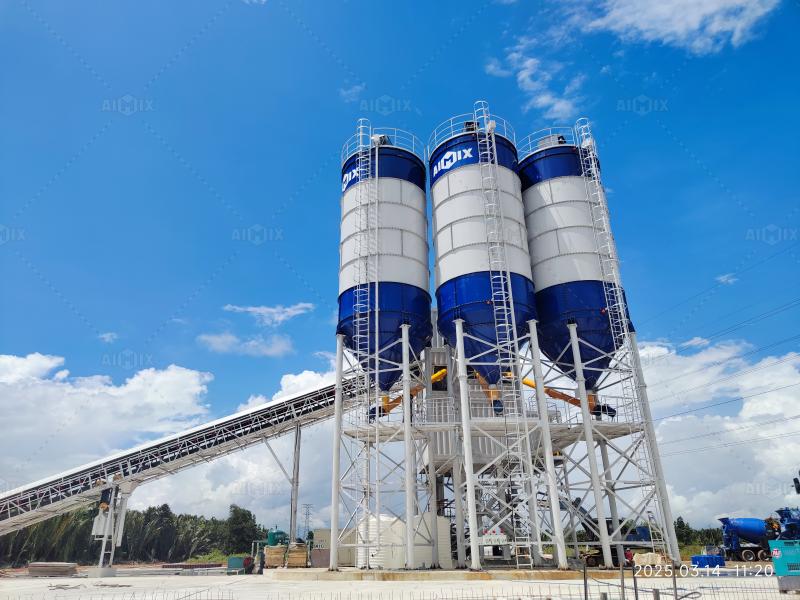Concrete Batch Plant Cost Optimization Through Preventive Maintenance
Concrete batch plants are the lifeblood of modern construction, providing the high-quality mix essential for infrastructure, residential, and commercial projects. However, maintaining their performance over time involves more than just daily operation—it requires a strategic approach to preventive maintenance. Done right, preventive maintenance can significantly reduce the concrete batch plant cost, not only in terms of repairs but also through minimizing downtime, extending equipment lifespan, and enhancing operational efficiency.
In this article, we explore how preventive maintenance serves as a critical lever for optimizing concrete batch plant costs, what components should be prioritized, and how to implement an effective plan.

What Is Preventive Maintenance?
Preventive maintenance is a proactive strategy aimed at keeping a concrete batch plant in optimal working condition through routine inspections, cleaning, lubrication, calibration, and part replacements—before a failure occurs. Unlike reactive maintenance, which only addresses problems after they arise, preventive maintenance anticipates and prevents costly breakdowns, ensuring uninterrupted production.
How Preventive Maintenance Reduces Concrete Batch Plant Cost
1. Avoiding Expensive Emergency Repairs
When a critical component like a mixer shaft or weighing system fails unexpectedly, the repair cost is often higher due to urgent labor, shipping of parts, and operational disruptions. These unscheduled downtimes not only affect project timelines but can also cost thousands in lost production.
By maintaining wear-prone parts such as belts, bearings, and sensors, companies avoid emergency repair bills and significantly lower overall concrete batch plant cost.
2. Extending Equipment Lifespan
A well-maintained concrete batching plant can last 15–20 years or more. Preventive maintenance helps prevent rust, motor burnout, electrical faults, and other common wear issues. Regular lubrication, filter replacement, and system calibration ensure that machinery runs at optimum efficiency, delaying the need for costly replacements or upgrades.
3. Reducing Downtime and Production Loss
Downtime not only means idle equipment—it also halts revenue. If a breakdown occurs in the middle of a high-volume project, the delay could cause contractual penalties or project losses. Preventive maintenance schedules ensure timely checks, allowing production to continue uninterrupted, improving the plant's productivity-to-cost ratio.
4. Optimizing Energy Efficiency
Dust build-up, worn-out motors, and uncalibrated systems can increase power usage. When batching equipment is maintained regularly, it operates more smoothly, consumes less electricity, and reduces unnecessary strain on the electrical system. Energy efficiency translates into cost savings, especially in high-output batching operations.

Key Areas to Target in Preventive Maintenance
To maximize cost savings, focus preventive maintenance efforts on these essential components:
Mixers
Regularly check mixer blades, arms, and linings for wear. Excessive wear can affect mix quality and increase energy use. Weekly cleaning and monthly visual inspections help avoid blade failure or mix inconsistency.
Weighing and Dosing Systems
Calibrate load cells and sensors at least once a month to ensure accurate weighing of aggregates, cement, water, and admixtures. Miscalibrations lead to waste and inconsistent concrete, increasing material costs and compromising quality.
Conveyor Belts and Screw Conveyors
Check belts for alignment, tears, and tension. Inspect screw conveyors for buildup and wear. Proper tensioning and cleaning reduce the risk of mechanical failure and excessive wear.
Dust Collection System
Clogged filters and faulty dust collectors can decrease air quality, harm worker health, and lead to fines. Regular cleaning and filter replacement ensure compliance and avoid damage to equipment caused by airborne particles.
Control Systems and Electrical Panels
Inspect connections, software updates, and sensor feedback to ensure the plant operates as programmed. A failure in the control system can stop production entirely—preventive checks help you avoid costly control system downtime.
Water and Admixture Systems
Check for leaks, blocked nozzles, and pump operation. Water and admixture accuracy affects mix consistency and directly impacts concrete performance.
Creating a Preventive Maintenance Schedule
A structured preventive maintenance plan should include:
-
Daily Tasks: Cleaning mixers, checking oil levels, visual inspections for leaks or wear.
-
Weekly Tasks: Inspecting belts, checking calibration of weighing systems, cleaning air filters.
-
Monthly Tasks: Lubricating bearings and chains, checking motor temperatures, reviewing software logs.
-
Quarterly Tasks: Full equipment audits, replacing critical parts (gaskets, seals, belts), electrical system checkups.
-
Annual Tasks: Deep inspection of all mechanical systems, structural evaluation, updating safety systems and certifications.
Using a checklist-based system and digital maintenance logs helps streamline these tasks and ensures accountability across shifts and teams.
Implementing Maintenance to Lower Operational Costs
Besides scheduling, it's critical to train your staff to recognize early signs of wear or malfunction. Equip operators with troubleshooting guides, and assign clear responsibilities for daily and weekly tasks. Use remote monitoring systems to track real-time plant performance and trigger alerts for preventive actions.
Investing in predictive maintenance tools—such as vibration sensors, thermal imaging, or AI-driven analytics—can help forecast part failures before they happen, providing another layer of cost optimization.

Conclusion: Maintenance as a Profit Strategy
Many companies view maintenance as a cost, but in the case of concrete batching plants, preventive maintenance is a profit strategy. It keeps your plant efficient, extends its lifespan, minimizes costly breakdowns, and helps avoid wasted concrete or missed deadlines.
By embedding preventive maintenance into your plant operations, you reduce the total concrete batch plant cost over its lifetime and increase your plant's productivity and profitability. The savings you gain from well-timed maintenance far outweigh the costs—and ensure your business remains competitive in a demanding construction market.